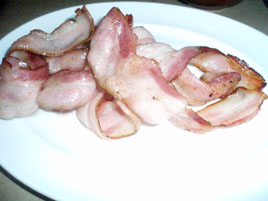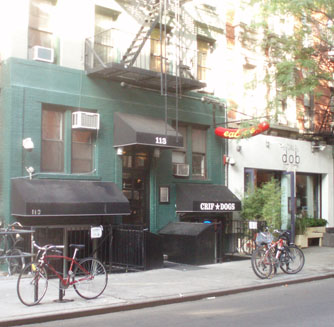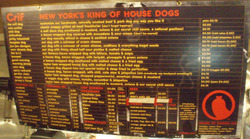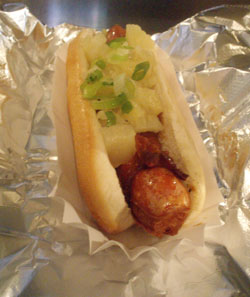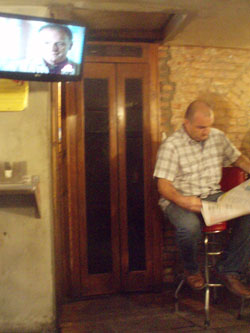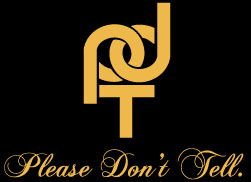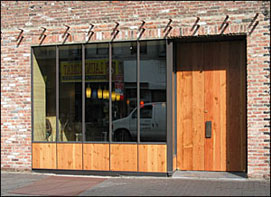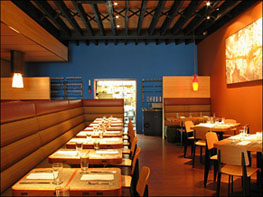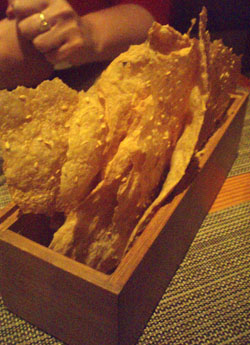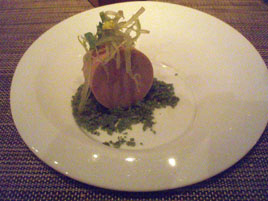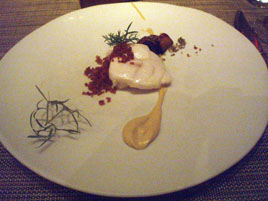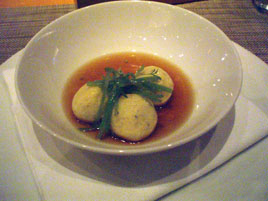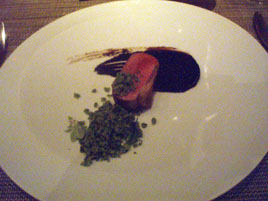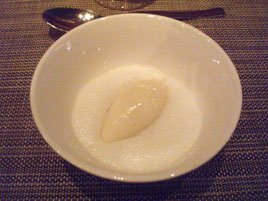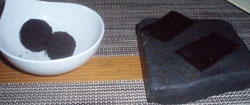Brindle Room
 Monday, August 30, 2010 at 04:32PM
Monday, August 30, 2010 at 04:32PM 
 The Brindle Room opened last March on a sleepy stretch of East 10th Street that doesn’t get much foot traffic.
The Brindle Room opened last March on a sleepy stretch of East 10th Street that doesn’t get much foot traffic.
The nouveau-Korean Persimmon was once here, but it is hard to imagine a more thorough transformation. The look is comforting, with exposed brick, polished dark wood tables and banquettes, and a warm butterscotch glow on the upper walls and ceiling.
The obscure name—Brindle is a shade of brown and black-speckled dog fur—has nothing to do with the cuisine, vaguely Southern-influenced comfort food that strays well past the usual boundaries. A poutine, much admired by reviewers, was offered for a while, but it seems to be on summer hiatus.
The menu is focused, which is always a good sign. There are fewer than twenty items in three categories—Spreads ($6–9), Small ($8–15), and Large ($19–23)—which inspires confidence that Chef Jeremy Spector is serving what he knows he can make well, and not wasting time by trying to please everybody.
There are just five entrées, er, Large Plates, with an emphasis on sharing the smaller ones, but as I was there alone I went the conventional route, ordering one of each.


An ample salad of Salt Roasted Beets ($8) with stilton blue cheese may not win any award for originality, but it was one of the most luscious, vibrantly favored beet salads I’ve had this year, and amply portioned at the price.
 The Parmesan Crusted Pork Chop ($23), featured on OzerskyTV a couple of months ago, deserves the accolades. It’s massive, and Spector cooks it perfectly on the pink side of medium. The parmesan crust was slightly too aggressive for my taste, but I am a shade more sensitive to salt than most diners, which probably means Spector is getting it right. The chop is served atop a tomato and green leaf salad that could be a proper appetizer.
The Parmesan Crusted Pork Chop ($23), featured on OzerskyTV a couple of months ago, deserves the accolades. It’s massive, and Spector cooks it perfectly on the pink side of medium. The parmesan crust was slightly too aggressive for my taste, but I am a shade more sensitive to salt than most diners, which probably means Spector is getting it right. The chop is served atop a tomato and green leaf salad that could be a proper appetizer.
The beverage list, like the rest of the menu, is focused and not expensive: who else serves $9 cocktails these days? I was in a beer mood; $12 buys an 18-ounce bottle of Samuel Smith’s Organic Cider. It’s nowhere near as sweet as most alcoholic ciders and paired well with the pork.
On weekends, the East Village starts late and ends late. At 7:00 p.m., I had the place to myself, but a late summer Saturday evening is probably atypical. It would be pointless to judge the service when the staff had only one customer, but I found the Brindle Room comfortable and relaxing, the food excellent for its ambition and its price point.
The Brindle Room (277 E. 10th St. between 1st Avenue & Avenue A, East Village)
Food: *
Service: *
Ambiance: *
Overall: *




